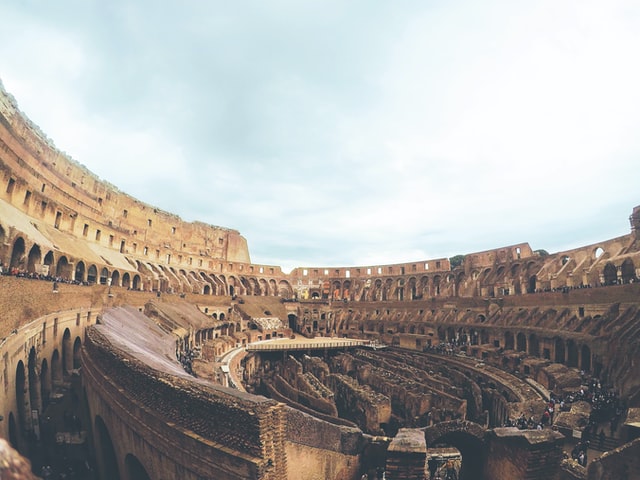
Colosseum Archaeological Park – The 5 stages not to be missed
The Archaeological Park of the Colosseum is a vast area that includes the Flavian Amphitheater, the area of the Roman Forum and the Palatine, the Domus Aurea on the Oppio Hill, the Arch of Constantine and the Meta Sudans. With tens of millions of visitors, the site is among the most visited in the world and the first in Italy. The park preserves and enhances some of the most important archaeological evidence of the history of Western civilization, from the end of the Bronze Age to the contemporary age.
The first? Without a doubt the Colosseum. What is always the most visited monument in Italy has become an icon. The reasons? For its exceptional architecture, for the fame of the gladiators and the games, for its fortune over the centuries, from medieval and Christian reuse to the ideological one that have made it the symbol of an empire and today that of the city of Rome and the world.
Then there is the Roman Forum: the political and civil heart of ancient Rome. This beats under a complex stratification of streets, squares and buildings of which history, excavations and restorations have repeatedly changed the face. An archaeological panorama unique in the world that also includes masterpieces of medieval art.
Another important treasure is the Palatine. On the Palatine are preserved the remains of Iron Age settlements related to the oldest core of the city of Rome. Seat of important city cults, including that of Magna Mater (Cybele), between the second and first centuries BC, the hill became the residential district of the Roman aristocracy. Here they created refined residences characterized by exceptional pictorial and floor decorations, such as those preserved in the House of the Griffins.
Another fundamental stop of the Archaeological Park is the Arch of Constantine. This monument, located in Piazza del Colosseo, next to the remains of the famous fountain, is an imposing triumphal arch. It manifests Constantine’s desire to make it a florilegium of Roman political sculpture.
Last, but not least, there is the Domus Area: what remains of Nero’s palace houses in magnificent architecture the secret wonders of Roman painting, rediscovered in the Renaissance and destined to fascinate the visitor today, thanks to the virtual reconstructions of the rooms.
Did you like this curiosity? If you want to discover the secrets, legends and mysteries of Rome, download the app of curiosities. Download Secret Maps!
And if you want to listen to something interesting, try the first Travel Podcast Platform. Try Loquis!

